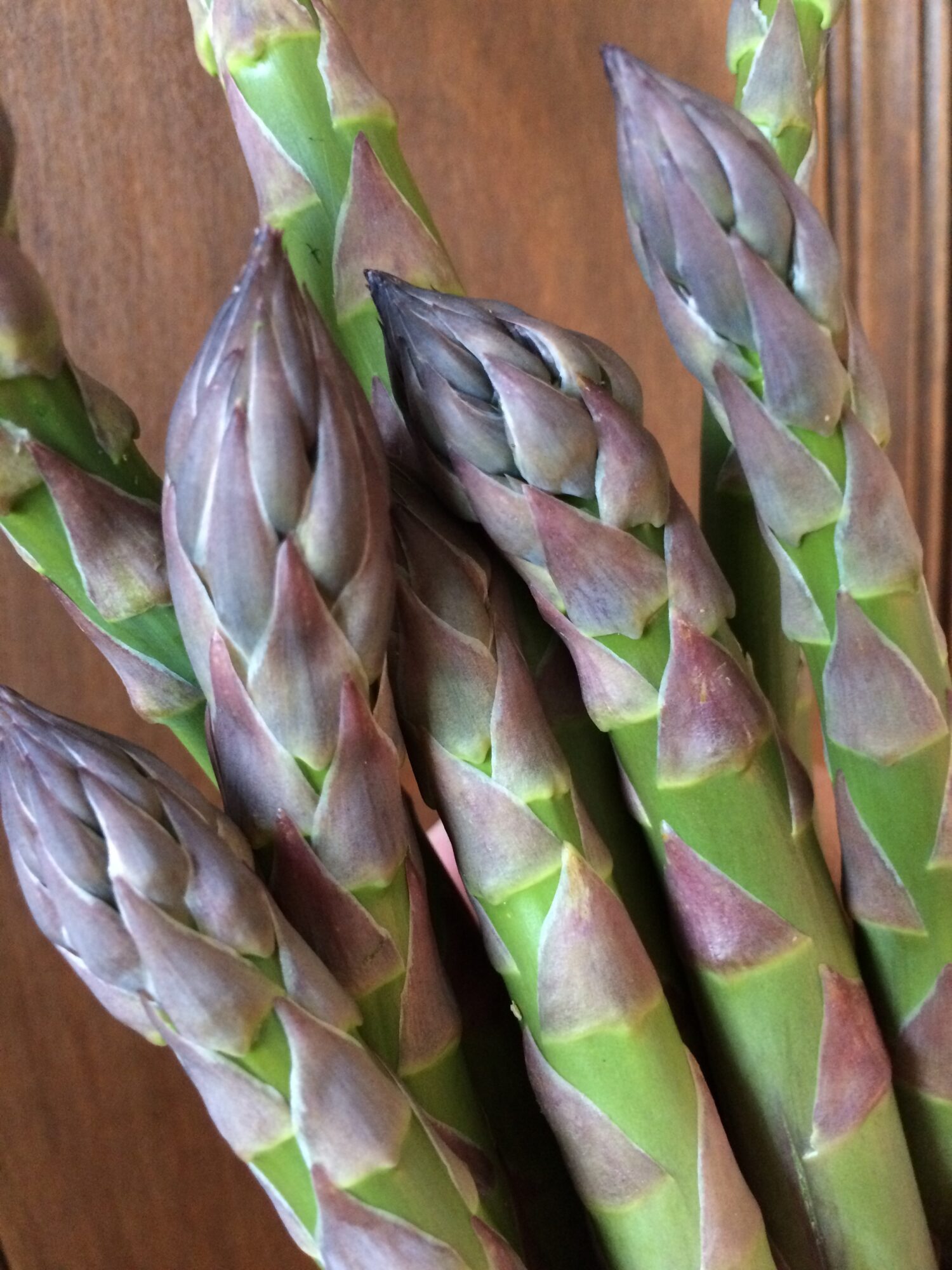I love June and the beginning of the growing season. Sure, May has its tulips and daffodils, but the earth doesn’t really begin to warm up until now. In fact, my mother (and her mother and grandmothers before her) never planted her garden until Memorial Day.
Sadly, I gave up long ago on a nice, big garden. The weeding would be ignored until I couldn’t distinguish the rows of tomatoes from the hills of potatoes. Bugs, birds, and snails feasted because it was a battle I could not fight. I just couldn’t find the time! But our established beds of asparagus and rhubarb are amazing. I harvest way more than we can ever eat as a family, and give away handfuls of both so as to not waste good food.
By the first week in June, we’ve taken the first cutting of hay off our fields. It’s a great feeling. After having fed out last year’s entire hay crop over the winter, we’re again in “banking mode”—tucking food away for later use.
The hay fields seem to look better every year. The growth is fuller and the roots are deeper, in large part because we keep chickens on generous swaths of the fields. We move them every few days throughout the summer—after they’ve devoured the grubs, scratched and aerated the soil, and spread their rich fertilizer.
We also rotate our goats and sheep through the hay fields between cuttings. They, too, spread a little fertilizer as they graze.
Maintaining a small farm such as ours, and watching the effects of our choices on the land over the course of many years, has me reflecting upon how much each of these systems depend on one another. The grass needs the chickens and goats, just as the chickens and goats need the grass.
If you are a regular reader of this column, you know that we have Great Pyrenees guardian dogs that keep watch over our farm animals. They, too, have had an effect on the ecosystem that is our farm and surrounding hills. By keeping coyotes and foxes outside of our farm’s perimeter, we’ve had a resurgence of rabbits and chipmunks…animals we rarely saw when we first moved here almost 15 years ago. We also regularly hear (and sometimes see!) a variety of owls that are increasingly drawn to the larger population of rabbits. Who would have guessed that having guardian dogs would bring owls back to our farm?
In fact, all of the systems on our farm are related or dependent upon each other in some way. The asparagus gets nutrients from our chickens, the goats get healthy and plump on the rich grasses, the chipmunks spread seeds that help maintain a diversity of plant life and forages, and the owls help keep that population in check while also hunting mice and rats that would get into our feed stores.
It reminds me of the lessons they are learning in Yellowstone, where researchers and park rangers are just now seeing the long-term effects of reintroducing gray wolves to the park 25 years ago. By preying on elk and changing the elks’ browsing behaviors, there is less pressure on willow stands—which in turn, has supported resurgence in the beaver population. More beaver dams mean fewer seasonal runoffs, recharging of the water table, and more marsh habitat for fish, otters, waterfowl, amphibians, moose and more. Virtually every population has benefitted, from grizzly bears to golden eagles, due to the reintroduction of gray wolves in 1995.
Clearly, none of these changes occur overnight. And, in every ecosystem, there will be some “losers” as pressures shift. For example, the elk population in Yellowstone has been drastically reduced, perhaps to more sustainable numbers. And area ranchers are not fans of the wolves leaving the park and preying on local livestock. We experienced our own version of this several summers ago when a juvenile bald eagle took up residence on our farm and preyed on our chickens. Bald eagles far prefer to catch fish and small animals like turtles and snakes, and because of their size, require a large hunting area. Perhaps pressures on its natural food source (fish) and a general increase in the overall bald eagle population throughout the Mohawk Valley, our visitor was forced to do something it would not normally do—hunt chicken.
The natural world very much resembles a great spider’s web—complex and beautiful, changing and repairing itself over time, adapting in the breeze. The stronger and more complex the web, the more likely it can withstand a small catastrophe. The interdependence and complexity of the natural world may not be immediately evident to the naked eye, but it is there.
Of course I can’t help but apply nature’s lessons to the human world. For example, I’ve always prided myself on being a very independent individual. I wave off offers of help, even when I clearly need it. As a nation, we celebrate Independence Day and love stories of individuals “pulling themselves up by their bootstraps”. But there are days when I wish we were not so obsessed. The farmer needs consumers, as consumers need the farmer. The taxpayer needs police, firefighters, and roads; the employer needs well-educated and prepared hires; the local government has the capacity to encourage a wide variety of businesses large and small to flourish—and a diversity of businesses helps keep and attract younger job-seekers.
Who are the metaphorical wolves and beavers in these scenarios? I don’t know; but if nature has taught me anything, we all need each other much more than we realize.
